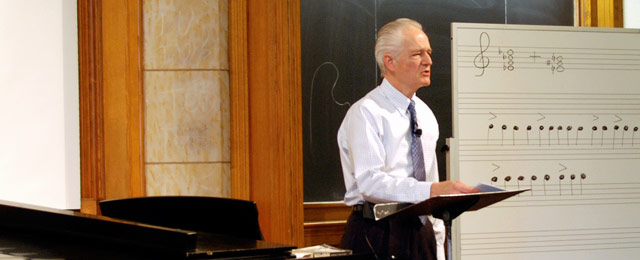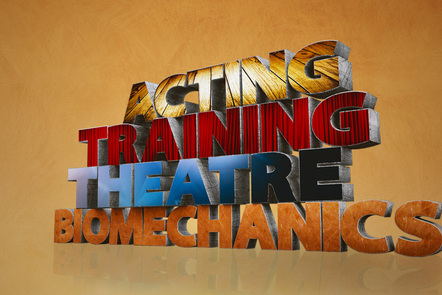Online courses directory (186)
With the failure of the French Revolution (Napoleon crowned himself Emperor, and after his defeat, a King was restored to power in France), there was a turn away from public, political life, toward personal, subjective experience. In large part, this turn characterizes the new style of Romanticism (don
This course fosters the development of aural skills that lead to an understanding of Western music. The musical novice is introduced to the ways in which music is put together and is taught how to listen to a wide variety of musical styles, from Bach and Mozart, to Gregorian chant, to the blues.
This class presents an analysis of the development of housing models and their urban implications in Paris, London, and New York City from the seventeenth century to the present. The focus will be on three models: the French hotel, the London row house, and the New York City tenement and apartment building. Other topics covered will include twentieth-century housing reform movements and work by the London County Council, CIAM, and American public housing agencies.
In this course, we will study important movements and some influential artists in Western art history. We will begin with the “Proto-Renaissance” in Italy in the 13th century and continue through to the late 20th century. You will become acquainted with certain regional and personal styles of art through this period, as well as a number of renowned works of art and architecture. Art forms and imagery are influenced by the surrounding world, the biography of the artist who produced the artwork, and other circumstances of artistic production. This course provides a framework for considering how and why certain artistic movements emerged in certain places at certain times. Some of the names and works we will look at might already be familiar to you, while others will be new. The ultimate goal of this course is not to provide data on individual works of art, although that is part of art history, but to act as a sort of springboard. You will gain tools for looking at and analyzing not only art by…
In this course, we will study the art of Classical Antiquity. The different units of the course reflect the main chronological stages in art development in Ancient Greece and Rome, from the coming together of the Greek city-state and the emergence of “geometric art” (around 900 B.C.) to the fourth century A.D. shift that took place within Roman culture and art due to the growing influence of Christianity. We will begin by underlining the unity of our subject matter: Rome not only conquered Greece, but it assimilated Greece’s cultural and artistic accomplishments. In fact, much of what we know of Greek art today we learned through Roman copies. We will also explore the development of Greek architecture, sculpture, and painting up to the Hellenistic period, when Greek art began to influence new parts of the globe through the conquests of Alexander the Great. We will also study the ways in which naturalism and idealism came together as Greek art developed over time. Next, we will turn our atten…
In this course, we will focus on becoming “literate” in the art of the Italian Renaissance, on identifying the effects that the Renaissance had on the arts of Italy, and discovering the ways in which specific historical developments impacted those arts from the end of the thirteenth century to the end of the sixteenth century. The Renaissance, a European phenomenon that began to develop in the late thirteenth century, refers to a marked shift in the ways in which individuals perceived their world. A new outlook was emergingone that was characterized by, among other things, increased humanism and a renewed interest in the cultures of Classical Antiquity (and all within a Christian framework). There is no specific date that marks the beginning of the Renaissance, but its burgeoning effects on art can be detected earlier in Italy than in other areas. The late thirteenth and fourteenth centuries in Italy are consequently referred to as the “Proto-Renaissance” and will constitute our first unit of…
Learn the fundamentals of colour theory and application using a variety of media and hands on techniques.
Get introduced to a range of skills and concepts to broaden your understanding of contemporary photographic art.
Discover a world of music exploring your community or family to learn how music represents cultural identity.
By Leslie Hill and Helen Paris
This seminar introduces, through studio projects, the basic principles regarding the use of color in the visual arts. Students explore a range of topics, including the historical uses of color in the arts, the interactions between colors, and the psychology of color.
This seminar introduces, through studio projects, the basic principles regarding the use of color in the visual arts. Students explore a range of topics, including the historical uses of color in the arts, the interactions between colors, and the psychology of color.
This course will examine the history of Western art from approximately 1600 to approximately 1800a period that bridges the gap from the Renaissance to the earliest days of the Modern era. Beginning with the Baroque in Counter-Reformation Italy and concluding with Neoclassicism in the late 18th century, we will trace the stylistic developments in Europe and America through a variety of religious, political, and philosophical movements. The class begins with the Baroque, which was the immediate successor to the Renaissance and to Renaissance humanism, and we will examine this period by regions (Italy and Spain, the Netherlands, and France and England). Next, the course moves on to explore the development of two opposing styles that emerged in the 18th century: Rococo and Enlightenment art. The course culminates with Neoclassical art, its development in a politically turbulent France, and its spread into other Western cultures, including Italy, England, and the United States. Crucial to this course is the emer…
In this course, you will study the various artistic movements that comprise 19th- and 20th-century modern art. You will examine several dozen artists, all of whom helped define their respective artistic styles and eras through their innovative approaches to representation, artistic space, and the role of the artist in society. Each unit will cover a significant period in the history of modern art and explore the ways in which both the principal figures from each period and the corresponding movements challenged the limits of art through the incorporation of modern life, as each artist addresses the political, philosophical, and personal implications of “modernity” and how it relates to the production of artwork. This course will begin with a brief review of the artists and movements that immediately preceded French Impressionism and will then take an in-depth look at the key artists and characteristics of Impressionism, widely considered the first “modern” art movement. You will then spend time read…
This course explores the history of the artistic developments of the 20th century in Western Europe and the United States. The art of this period is characterized by extraordinary experimentation and innovation in styles, materials, techniques, and modes of dissemination. In addition to painting and sculpture, the 20th century witnessed the rise in popularity of photography, collage, montage, installations, earth art, performance, and conceptual art. Artists were sometimes inspired by the works of past masters but also often by contemporary changes in intellectual thought and social conditions. Therefore, we will examine the intellectual and cultural beliefs that this art both reflects and helped shape. Despite the great variety of artistic styles and theories that we will examine, a number of important themes consistently recur. If you keep them in mind as you progress through the course, you will find it easier to organize your thoughts and make meaningful comparisons among various artists, movements, and…
This course surveys art of America from the colonial era through the post-war 20th century. We will consider broad stylistic tendencies in various regions and periods and examine specific artists and works of art in historical and social contexts, with emphasis on the congruent evolution of contemporary American multi-cultural identity. We will move chronologically, more or less, with many overlaps and cross-chronological, thematic diversions that will help shape this overview and offer different perspectives on the notion of an “American art,” per se. Overarching issues that have interested major scholars of American art and its purview include the landscape (wilderness, Manifest Destiny, rural settlement, and urban development); the family and gender roles; the founding rhetoric of freedom and antebellum slavery; and notions of artistic modernism through the 20th century. A background in the basic concepts and terms of art history and art practice, and/or American studies in other disciplines, w…
This Graphic Design course builds on the introductory course and investigates the application of graphic design principals in the production process such as composition, balance, contrast and hierarchy. It is suitable for students studying graphic design, and designers and artists working in the graphic design industry. <br />
Explore the history and practice of physical theatre training using internationally recognised approach to acting: biomechanics.
This course is a technical ear training programme designed to improve critical listening in a music studio context.
Trusted paper writing service WriteMyPaper.Today will write the papers of any difficulty.














